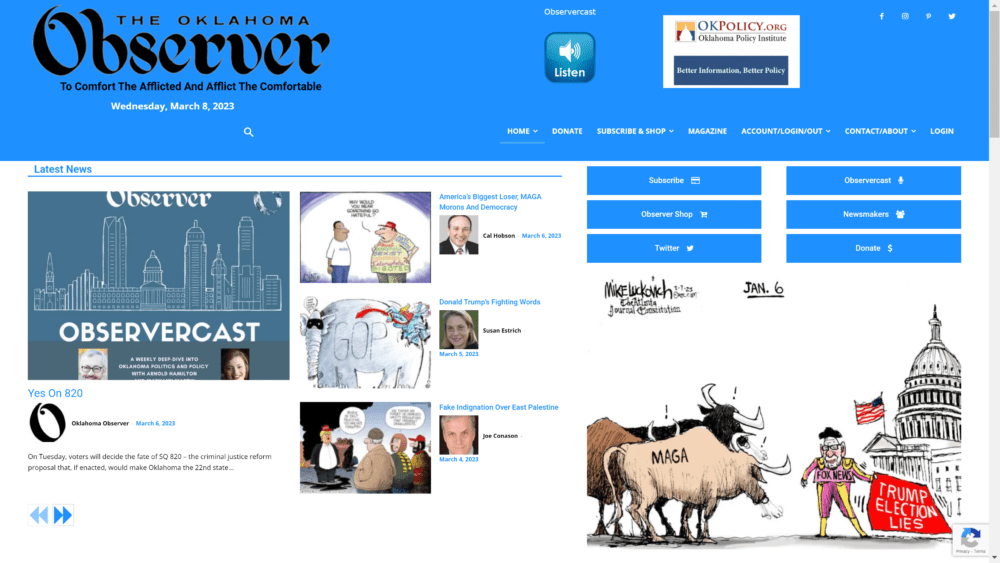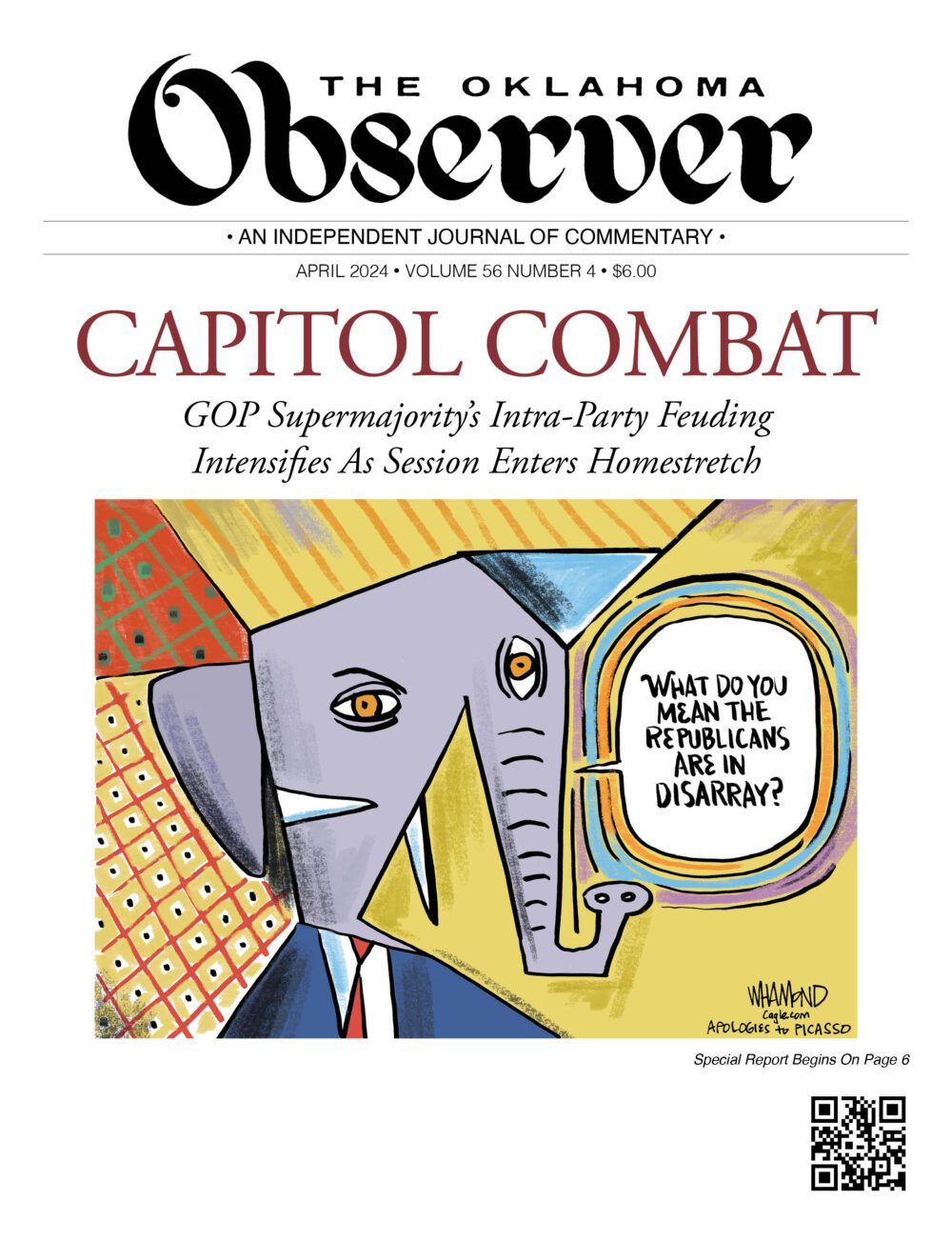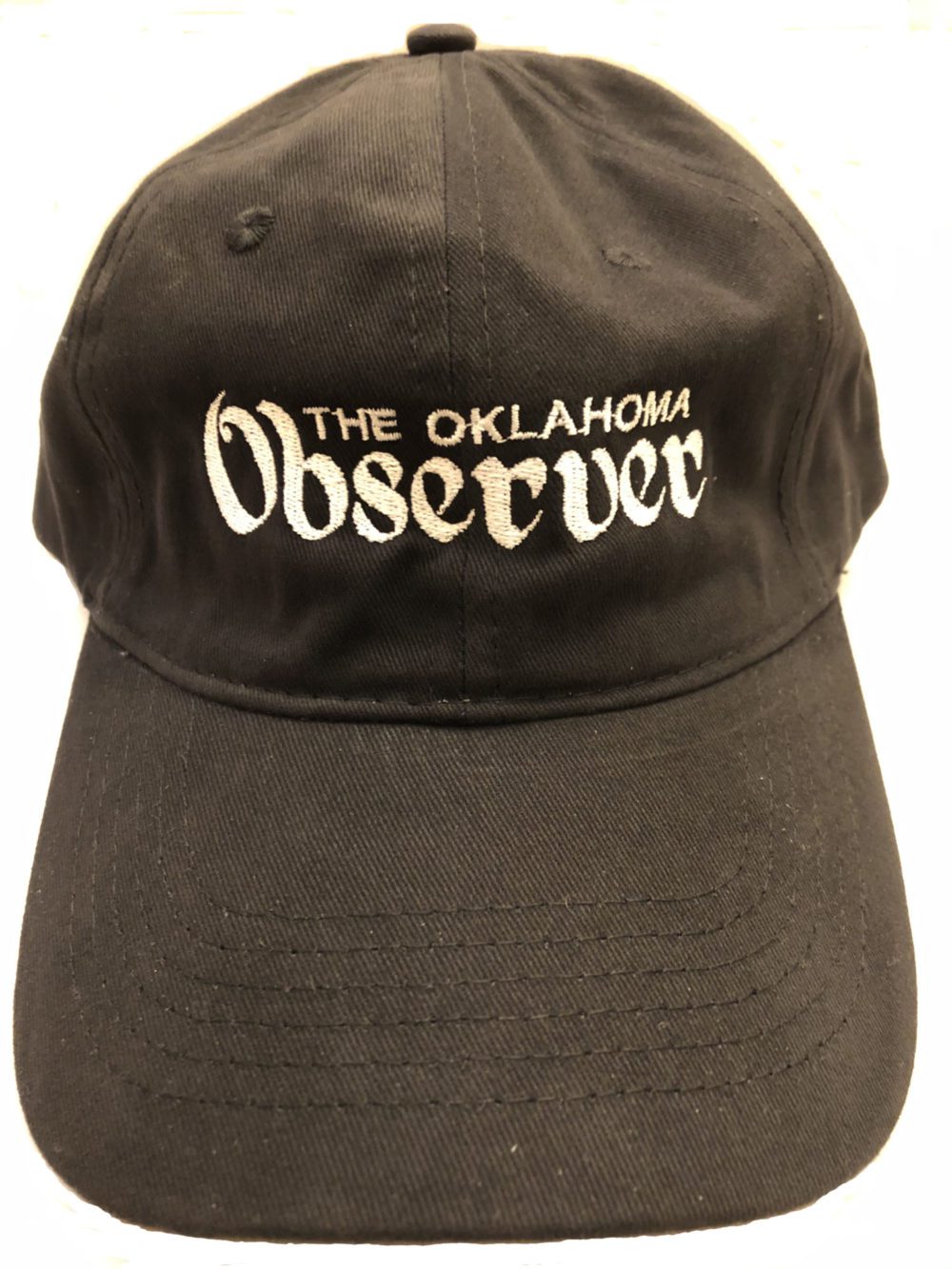BY NATHANIEL BATCHELDER
The irreplaceable rail hub at Oklahoma City’s Union Station can still be saved by relocating one section of the new Interstate 40 south of the rails. This is critical because national rail connections and light rail connections to the rest of the state will become invaluable as gasoline supplies dwindle and prices climb. State senators, representatives, City Council members, and opinion leaders across our state MUST come to the aid of OKC’s rail hub.
See Ed Kessler’s story in Saturday’s Norman Transcript:
http://www.normantranscript.com/archivesearch/local_story_171011539
Published June 20, 2009
TWO DECADES OF DECEIT
By Edwin Kessler
A letter dated July 27, 1989, signed by Neal A. McCaleb, then Director of the Oklahoma Dept. of Transportation, confirmed ODOT support for purchase “of the Union Station terminal in Oklahoma City as a means of providing a central focal point for existing public transportation and potential future passenger rail services for Central Oklahoma.” The $1.2 million price for purchase of the terminal, which is in excellent condition today, was 80 percent funded with federal dollars.
During the 1990s, however, civic and government leadership in Oklahoma City proposed in contradiction to the 1989 letter, that the elevated Crosstown Highway [I-40] through downtown Oklahoma City be replaced by a 10-lane highway through the rail yard at Oklahoma City’s Union Terminal. Government may change its policies, but the proposed change has never been fairly justified. And Neal McCaleb now leads a group here [Restore Trust] that promotes highways.
The estimated cost of the proposed four miles of new highway is about $600 million, and the highway would destroy future use of the Union Terminal as the rail hub that it once was and could readily be again.
Two tracks through the Union Terminal rail yard connected Oklahoma to the national rail system. One track is operated by the Union Pacific Railroad and is an active freight line today. It continues to connect to Choctaw, Harrah, Shawnee and Seminole to the east, also serves several business on the west side of Oklahoma City and goes further west. This track is not abandoned, but would be depressed and run parallel to the new highway.
The second track, proposed for permanent removal, is the BNSF Chickasha line, and it carries trains operated by the Stillwater Central Railroad. During the week beginning June 7, it was removed from the Union Terminal, and it is replaced by a bypass, the Packing Town Lead, on the south side of the North Canadian River. It connects on the west side with Chickasha, Lawton, Ft. Sill, Altus and intermediate points. To the east, it goes to Wellston, Stroud and Tulsa.
In a report dated Feb. 22, 1999, then Oklahoma City Planning Director Garner Stoll stated that the routing decision was made in advance of study, that the chosen route was the most expensive by far among alternatives, and gave several other important arguments against the choice of the alternative route and the highway design. Thus, as the Crosstown project was developed and public meetings held at which benefits of the preselected route were emphasized, the Environmental Policy Act was violated because Section 1502.2 and 1506.1 of the Act require that “Agencies shall not commit resources prejudicing selection of alternatives before making a final decision.”
In a letter dated July 24, 2000, the State Historical Preservation Office found that the Crosstown project “will have no adverse effect on the Union Station, a property individually listed on the National Register of Historic Places.” While the letter referred to the so-called 106 Process [36 CFR Part 800], it did not indicate that the 106 Process speaks emphatically to public participation, which was not part of the SHPO study. Furthermore, tunnels that facilitate all-weather access to the tracks, and underpasses that promote public safety and remain key design elements of the Union Terminal and its rail yard are not mentioned in the SHPO letter, but consideration of such elements is part of the legally required 106 process. Thus the SHPO finding of no adverse effect violates the 106 Process as defined in the Historic Preservation Act. Protest at the time of the letter and subsequent efforts toward reconsideration of the SHPO decision were to no avail.
Another violated law was Section 1204 of the Transportation Equity Act for the 21st Century, as presented on pages 82 and 83 of that Act.
On Sept. 23, 2005, the BNSF Railway Company filed with the Surface Transportation Board a petition to abandon the Chickasha rail line through the Union Terminal rail yard. The STB regulates U.S. rail, especially for freight. Opponents cited a rule that requires disapproval of a proposed abandonment unless no freight traffic has originated on the segment proposed for abandonment during the two years preceding an application. However, opponents were unable to obtain sworn certifications descriptive of local freight service during the relevant period.
On Oct. 13, 2005, the STB granted abandonment authority to BNSF, but included timing restrictions that applied to completion of the alternative route, the Packing Town Lead, which runs south of the North Canadian River and connects with the Chickasha Line on both ends. The timing limitations were not met but they became unimportant in light of a subsequent STB decision.
This decision, served on June 5, 2008, declared the initial abandonment application by BNSF in 2005 “void ab initio” because of “false and misleading information.” In other words, BNSF, backed by the Oklahoma Deptment of Transportation, had lied to the Surface Transportation Board. Numerous filings in this matter with much additional information are available on the STB Web site under file AB-6-430-X.
Prior to the final STB decision on the original request for abandonment, there was another on Feb. 7, 2008. This directed BNSF not to “consummate” the abandonment. BNSF interpreted this decision as only requiring BNSF to restrain from pulling the last tie and piece of track, not from intermediate steps of removal. BNSF removed or allowed others to remove large sections of track and BNSF diverted traffic on the Chickasha Line to the Packingtown Lead.
Therefore, opponents filed in the Federal District Court for the Western District of Oklahoma for injunction against removal of tracks by BNSF and/or the Oklahoma Deptment of Transportation or other entity. The suit was dismissed following the STB final decision of June 5, 2008, that threw out the BNSF application of September 2005. A related action in the U.S. Court of Appeals in Washington, D.C., also was declared moot upon the issuance of the June 5, 2008, STB decision. Nevertheless, considerable track was cut and removed. BNSF has stated that the track will be replaced if there is a request for service, but additional track is being removed, not replaced. The STB lacks enforcement authority, and there has been no significant effort toward stopping BNSF and ODOT from pursuing their plans well in advance of receiving permission to do so.
During the case at the United States District Court in Oklahoma City, Garner Stoll, now assistant director for Planning and Zoning in Austin, Texas, presented his 1999 report and added comments as follows: “This paper [1999 report] concluded that ODOT did not complete an objective analysis of the alternative routes for the reconstruction of I-40 as is required by a Major Investment Study. I still hold this view.”
Other authorities who have decried the route of Oklahoma’s Crosstown Project in public statements, include Marvin Monaghan, a former member of the board of DART, in Dallas; Rocky Anderson, the mayor of Salt Lake City (who called the project “insane”); Malise Dick, a former international highway planner with the International Monetary Fund; and Garl Latham, a railroad consultant in Dallas who has twice visited Oklahoma City and testified at a meeting of our Oklahoma Legislature’s Transportation Committee. And there is a plank in the Oklahoma Democratic Party Platform document from 2007 that calls for preservation of the Union Terminal rail yard. Yet, in spite of this chorus, ODOT continues determined to remove Oklahoma’s existing rail hub and in this is even supported strongly by our Governor, who has stoutly refused even to convene a commission to review the Crosstown process. Indeed, in February and March 2004, Councilors of the City of Norman were threatened by ODOT Director Gary Ridley with loss of funds should they vote to ask the Governor to support a study of the Crosstown project!
– Nathaniel Batchelder is director of the Oklahoma City Peace House and an occasional contributor to The Oklahoma Observer; Edwin Kessler is vice-chair of Common Cause of Oklahoma and retired director of the National Severe Storms Laboratory in Norman, OK.








Two decades of deceit: Part 2
By Edwin Kessler
Editor’s note: This is the second part of a commentary submitted by Ed Kessler of Norman. The first part was published in Saturday’s Transcript.
There were many convincing responses that urged change to the route of the new highway in order to preserve the Union Terminal rail yard. The new public interest organization, Oklahomans for New TRansportation Alternatives Coalition, joined the Oklahoma Chapter of the Sierra Club, the Norman Chapter of the League of Women Voters, the Norman Sustainability Network, The cities of El Reno, Lawton, Norman, Oolagah and Shawnee, the Oscar Romero Catholic Worker House, legislators and citizens in opposition to the proposed Crosstown route.
Nevertheless, in a decision served May 20, the Surface Transportation Board ignored all public inputs, and in their very own words, “the need is far too speculative to overcome the valid and immediate public purpose of relocating the I-40 highway.” And this in spite of the 1989 letter, contradictory statements by ODOT Director Gary Ridley, the national security threat represented by our country’s dependence on foreign oil, clear indications of decline of the automobile, and the many falsehoods and deceptions that have been characteristic of the Crosstown process since its beginnings. Particularly galling is STB’s statement, “…an exemption will foster sound economic conditions and encourage efficient management….” The STB decision is essentially a deregulation or loosening of rules that otherwise govern BNSF.
The STB is a powerful agency, and it is legally empowered to render exemptions. As the board stated in its decision: “The board may grant exemptions on its own initiative,” and it did. Sen. James Inhofe of Oklahoma knew of the decision two or more weeks before it was rendered, suggesting that his office had let it be known that he favored approval of the ODOT proposal and that, for all of its alleged independence, the board bows to political pressure. Well, the New Jersey Congressional delegation is fully angered by the STB decision for Oklahoma, because of its possible impact on issues in New Jersey.
Most strangely, the decision has flagrantly violated several mandates to the STB presented in 49 U.S. Code 10101. These call for promotion of beneficial competition among rail carriers and various modes of transportation; promotion of reduced congestion and smooth flow of rail traffic; promotion of effective freight service and promotion of public safety and convenience.
An ONTRAC filing with the Surface Transportation Board documents the violations. Local monopoly by the BNSF is increased, and rail traffic on the Chickasha Line has been delayed up to five hours because of the requirement that traffic must now be cleared to cross the North Canadian River on one mile of the already congested N-S BNSF line. Public safety is reduced by proposed permanent elimination of grade-separated crossings of the Chickasha Line at Walker and Robinson in Oklahoma City and their substitution by at-grade crossings on the same streets at the Packing Town Lead. Although the at-grade crossings were improved with about $35 thousand taxpayer dollars provided by ODOT, the substitution of at-grade crossings for grade separated crossings is a blow to public safety and contrary to both state and national policies begun by the 1994 safety initiative of the Federal Railway Administration.
Why does practically every Oklahoma citizen who learns about this issue oppose the Crosstown plan? It is because the choice of route would permanently handicap future rail service for passengers, freight, and mail in Oklahoma and because energy-efficient rail transportation is assuming ever more importance at this time of increasing concern about global warming and resource limitation issues. Our State owns nearly 900 miles of rail line and most converge at Union Terminal, which until the mid-20th century was a hub for passengers, mail and package freight, and remains in excellent condition. Opponents seek transportation suited to today’s conditions: sustainability, reduced highway congestion, reduced carbon dioxide emissions and increased efficiency of energy usage. Such objectives are of increasing concern today and intertwined issues of resource depletion and global warming are ever more clearly perceived. The Crosstown highway has become the most important issue for Oklahoma of recent decades.
We need to ask and try to answer very big questions, Why? Why do the Association of Central Oklahoma Governments and our governor not respond to petitions by the City of Norman and four other Oklahoma cities, to our governor and to the Surface Transportation Board?
Why does Oklahoma City-based Alliance for Public Transportation focus so completely on buses and never mention the Union Terminal? Why has response been so delayed to results of surveys showing a strong public wish for better public transportation? Why are unanimous opinions of authorities disregarded? Why do we have so many studies and surveys with few results? Why is essential information on this matter concealed from public view? Why is Oklahoma more than a decade behind other cities, e.g., Atlanta, Dallas, Phoenix, and Salt Lake City, in development of energy-efficient public transportation by rail?
Answers in significant part lie in findings publicized by former Oklahoma legislator Wanda Jo Stapleton last April 25 in The Oklahoma Observer, and elsewhere — findings of large financial contributions by highway and petroleum interests to political campaigns, reflecting the continuing broken nature of the political system in this our country. Are these influences in the real long term interests of the contributors? There are other thoughts concerning land purchases and ownerships.
In 1949, several companies apparently led by General Motors, were convicted of conspiring to monopolize the provision of parts and supplies to subsidiary companies, which bought electric railway systems and then replaced electric cars with buses. In the words of E. J. Quinby, president and founder of the Electric Railroader’s Association, this had been part of “an organized campaign to deprive the American public of their splendid electric railway systems…” The campaign was successful, though GM and some other companies were convicted, with the conviction confirmed on appeal in 1951. We note that General Motors is bankrupt today.
What was General Motors’ vision in the early 20th century that led that company to conspire with others to remove trolley tracks? What is the vision of Oklahoma leadership today, impelling toward permanent removal of the “best in the west” capability for public transportation by rail? And how will Oklahoma and our Nation fare in a future greatly influenced by powerful “highways only” lobbies, although liquid fuels will become scarce and expensive? Opponents of the current plans to destroy the rail yard do not oppose highways, but they oppose “highways only.” Modern public transportation starts with a national rail system. Oklahoma could be its hub. The economic and quality of life benefits would be tremendous.
This is a small fraction of available information. For more information, e-mail the author at kess3@swbell.net.
“wow, awesome weblog article.”